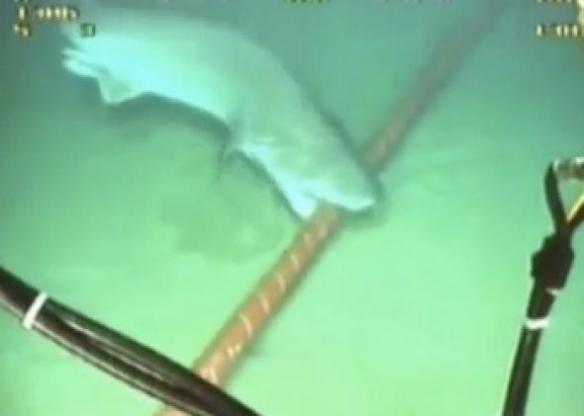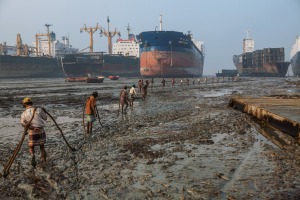I am now reposting this after an unknown error occurred earlier today with the posterous template. So here we go again…
I am taking a day off at International Studies Association Annual Convention in Montr??al today, looking forward to visit the Museum of Fine Arts and see the Terracotta Army (the by now global presence of which might inspire a separate post in the future). To start the day, here are a couple of quick notes and early impressions from the conference.
To begin with, this conference is huge. The total sum of events and panels is 1,094, cramped into four days. This means that panels start as early as 8.15 in the morning, and up to 99 panels are on at the same time – at least that’s the high-score I was getting when browsing throught the conference program which, needless to say, looks somewhat like a phone book. I also got the impression that the organizers assigned panels which they thought would be crowd-pullers preferably to the early slots. Here’s a sample of panel themes which also gives you an idea about the variety of topics discussed here:
– Confronting the Transnational State
– Why Did the U.S. Invade Iraq?
– Intelligence Analysis and Decision
– Religion, Values, and Common Faith as Facilitators of Governance Mechanisms
– Making Offers You Can’t Refuse: The Art of Coercion in International Politics
– Natural Disasters and Political Unrest
– The Chinese Puzzle: Democracy vs. Autocracy
– Using Movies as Teaching Tools
– The Body in International Relation
– Choosing Terrorist Strategies: Outbidders, Specialists, and Two-Level Games
– Human Rights: The Hard Feminist Questions
– Piracy Studies: The Legalization of Contemporary Responses to Piracy
By the way, the general theme of the conference is “Global Governance: Political Authority in Transition”. The variety of panels also reflects the variety of sections within the ISA which range, as I found out just now, from Diplomatic Studies, International Ethics, Peace Studies and Political Demography to Feminist Theory and Gender Studies, Intelligence Studies, and to the “Lesbian, Gay, Bisexual, Transgendered, Queer, & Allies Caucus”.
According to my little theory about the placement of panels within the schedule, the organizers must have considered the panel I was on mildly interesting, since it took place at 10.30 in the morning. As posted here earlier, the panel was on “Numbers in Global Governance”, and I think it went quite well. The papers from which I personally benefitted the most were written by the two organizers, Hans Krause Hansen and Tony Porter who reflected generally on the role of numbers in global governance, and by Lars Th??ger Christensen and George Cheney on the notion of transparency, and on the problems and paradoxes it entails. Overall, the panel was, I think, one of the few not dominated by political scientists who as a profession appear to be very much in control of the ISA. The discussion was generally sympathetic to the understanding shared by the speakers that tracking the circulation and use of numbers, ranking, ratings, performance measurements, and so on, is a critical element in understanding contemporary forms of global governance.
Our panel chair was Mikkel Flyverbom from Copenhangen Business School. I saw him present his paper on internet politics yesterday on another panel, and he might be an interesting colleague to watch with respect to the general interest of this blog. Actually, I asked him whether he would like to contribute to this blog occasionally. Mikkel is applying ANT to analyzing emergent forms of authority in governing the internet, and though he had a hard time to present his case effectively as one paper among six during the 105 minutes of the panel, and to an audience largely innocent of both ANT ire and ANT interest, he surely did leave a mark. He has a book coming out about his understanding of entangled authority that will definitely be worth a look.
Which brings me to pick up on our earlier discussion about good and bad conferences. It is hard but manageable to get four papers discussed in 105 minutes if the discussant is really well prepared and effective in addressing the papers, as Brad Epperly surely was in the case of our panel. Increasing the number of papers further however, as was the case in the “Getting to Grips with Internet Governance” panel that hosted six papers, must leave the audience somewhat disoriented even if the discussant somehow manages to address all of the papers in, say, 15 minutes. If any author on the panel additionally chooses to present an approach that is somewhat incongruous to the other papers (as Mikkel did with arguing along ANT lines rather than presenting another customized IR approach), this is very likely to be somewhat drowned out. So, I was asking myself, if you already have 1,094 panels to deal with in organizing a big convention, would it really hurt to have a couple of double panels to accommodate an effective discussion of all the papers which panel organizers have deemed interesting enough to have included???
There is also something to be said about hosting an event like this in a big corporate style hotel (or, as in this case, in three of them), with panels taking place in “hospitality suites” and conference rooms named after local heroes, politicians, business men, artists, or, most conspicuously, militarists, in an environment littered with all sort of “luxury” fabrics from deep carpets to table cloths which look more like curtains (not to mention that in the corridors of one of the hotels, you suffer from continuous exposure to “easy listening” elevator style music), and with, most annoyingly, having to wear your name badge all the time (since otherwise you are very likely to be asked by one of the very friendly hotel clerks to present them). The premises of McGill and a couple of other local universities are within a short walk of the conference sites, so why lock us away like this? Like he who shall not be named at this point, I would prefer to have outsiders in, and insiders out, at least to some extent. The latter I now happily implement immediately.



 We’ve talked about his many times,
We’ve talked about his many times,  *from: http://www.cnn.com/2016/11/28/asia/japan-sinkhole-fukuoka/
*from: http://www.cnn.com/2016/11/28/asia/japan-sinkhole-fukuoka/







































You must be logged in to post a comment.